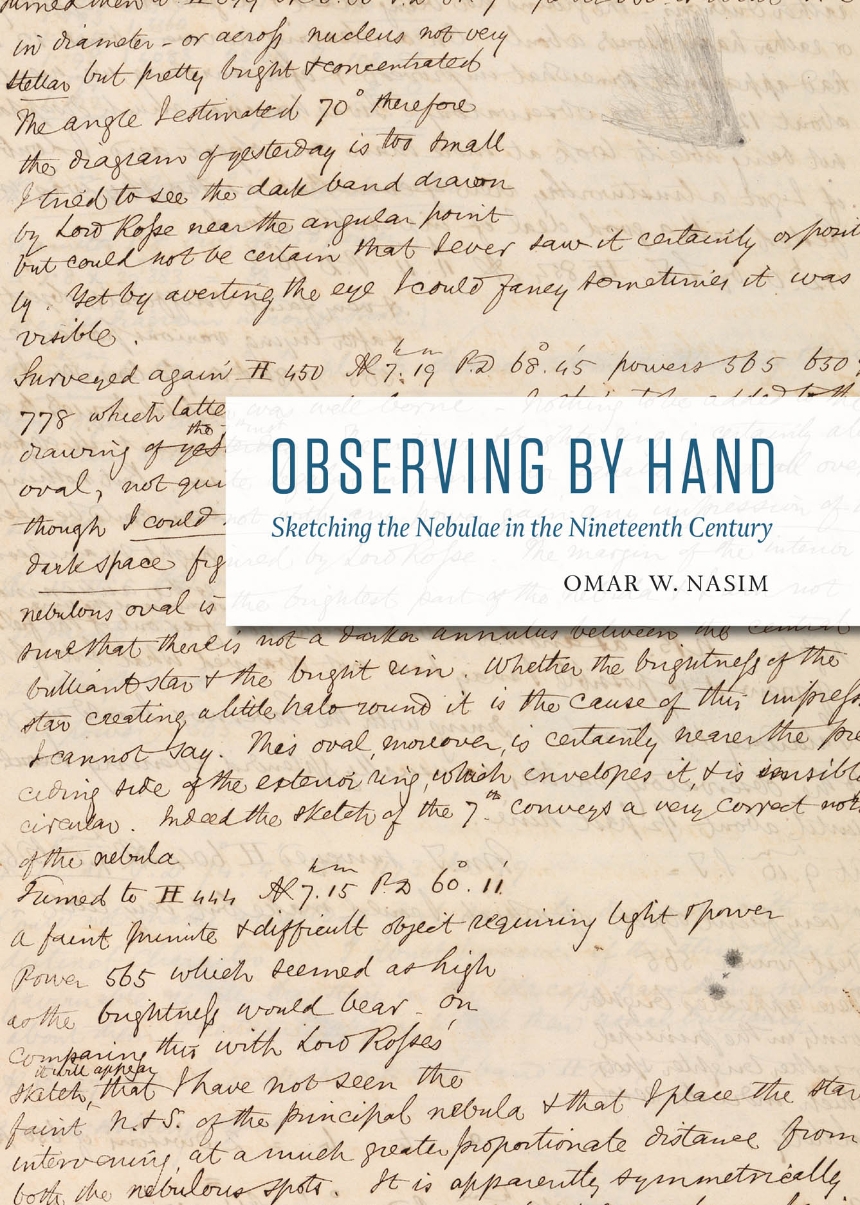Observing by Hand
Sketching the Nebulae in the Nineteenth Century
Today we are all familiar with the iconic pictures of the nebulae produced by the Hubble Space Telescope’s digital cameras. But there was a time, before the successful application of photography to the heavens, in which scientists had to rely on handmade drawings of these mysterious phenomena.
Observing by Hand sheds entirely new light on the ways in which the production and reception of handdrawn images of the nebulae in the nineteenth century contributed to astronomical observation. Omar W. Nasim investigates hundreds of unpublished observing books and paper records from six nineteenth-century observers of the nebulae: Sir John Herschel; William Parsons, the third Earl of Rosse; William Lassell; Ebenezer Porter Mason; Ernst Wilhelm Leberecht Tempel; and George Phillips Bond. Nasim focuses on the ways in which these observers created and employed their drawings in data-driven procedures, from their choices of artistic materials and techniques to their practices and scientific observation. He examines the ways in which the act of drawing complemented the acts of seeing and knowing, as well as the ways that making pictures was connected to the production of scientific knowledge.
An impeccably researched, carefully crafted, and beautifully illustrated piece of historical work, Observing by Hand will delight historians of science, art, and the book, as well as astronomers and philosophers.
296 pages | 85 color plates | 7 x 10 | © 2013
Art: Art--General Studies
Physical Sciences: Astronomy and Astrophysics, History and Philosophy of Physical Sciences
Reviews
Table of Contents
Introduction
Prologue
1 Consolidation and Coordination: Lord Rosse and His Assistants
2 Use and Reception: Biography of Two Images
3 Conception and Perception: E. P. Mason and Sir John F. W. Herschel
4 Skill and Instrumentation: William Lassell and Wilhelm Tempel
Conclusion
Acknowledgments
Notes
Works Cited
IndexAwards
Choice Magazine: CHOICE Outstanding Academic Title Awards
Won
History of Science Society: Pfizer Award
Won
